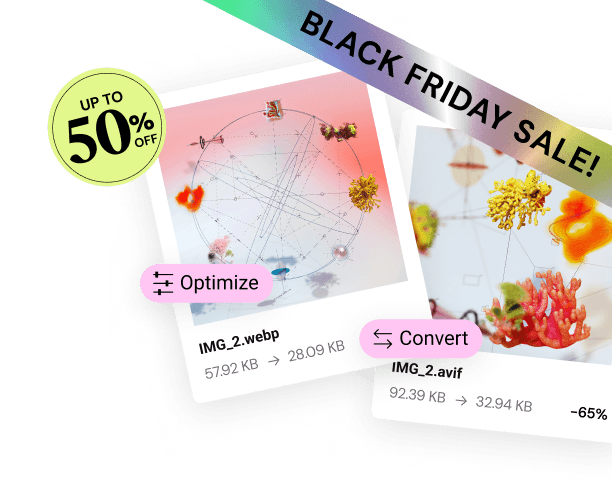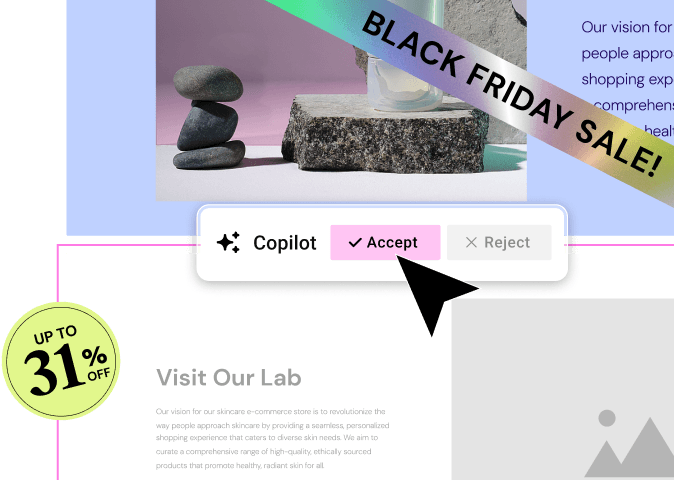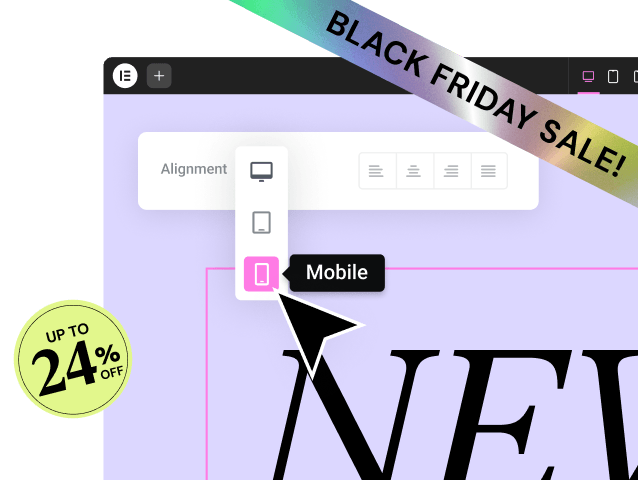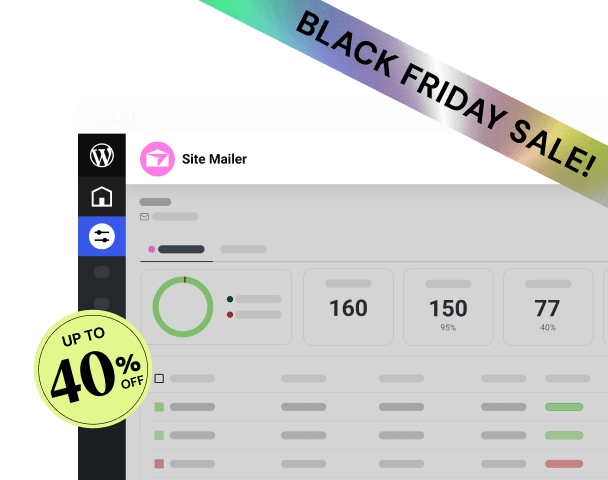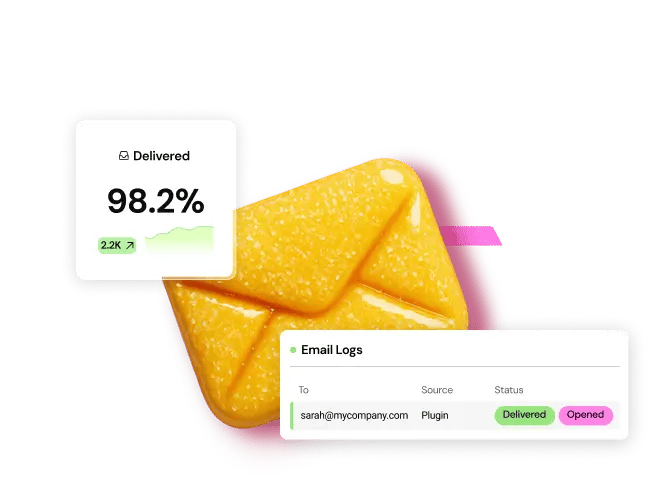Table of Contents
Creating a multilingual website is a strategic move that can unlock new revenue streams and foster a more inclusive brand image. It signals to international visitors that you value their business and are committed to providing a user-friendly experience. This guide will walk you through everything you need to know to build a successful multilingual website, from initial planning and choosing the right tools to translation strategies and ongoing maintenance.
Key Takeaways
- Strategic Planning is Crucial: Before you start translating, you need a solid plan. This includes identifying your target markets, understanding their cultural nuances, and setting clear goals for your multilingual website.
- Technology Matters: The right tools can make or break your multilingual project. You’ll need to choose a content management system (CMS) that supports multiple languages and select the best translation plugins or services for your needs.
- Translation Quality is Non-Negotiable: Poor translations can damage your brand’s credibility. Whether you opt for professional human translation, machine translation, or a hybrid approach, quality should be your top priority.
- SEO for Every Language: A multilingual SEO strategy is essential to ensure your website is visible in search engines for each target language. This involves keyword research, hreflang tags, and localized content.
- User Experience is Universal: A great user experience transcends language. Your multilingual website should be easy to navigate, with a clear language switcher and culturally appropriate design elements.
- Ongoing Maintenance is Key: A multilingual website is not a “set it and forget it” project. Regular updates, content additions, and quality checks are necessary to keep your site relevant and effective in all languages.
The Why and When of a Multilingual Website
Going multilingual is a significant investment of time and resources, so it’s important to understand the potential return. The benefits of a multilingual website are multifaceted, impacting everything from customer acquisition to brand perception.
Expanding Your Global Reach
The most obvious benefit of a multilingual website is the ability to reach a wider audience. English may be a common language online, but it’s not the only one. By offering your content in other languages, you can tap into new markets that would otherwise be inaccessible. Consider these statistics:
- Only about 25% of internet users are native English speakers.
- 72.1% of consumers spend most or all of their time on websites in their own language.
- 56.2% of consumers say that the ability to obtain information in their own language is more important than price.
These numbers paint a clear picture: if you’re not speaking your customers’ language, you’re missing out on a massive opportunity.
Building Trust and Credibility
A multilingual website is a powerful trust signal. It shows that you’ve invested in your international customers and are committed to providing them with a positive experience. When users can navigate your site, read product descriptions, and make purchases in their native language, they feel more comfortable and confident in your brand. This can lead to higher conversion rates and increased customer loyalty.
As web development expert Itamar Haim states, “A multilingual site is more than just translated text. It’s about creating a localized experience that resonates with the user on a cultural level. When you get that right, you’re not just a foreign company anymore. You’re a brand they can trust.”
Gaining a Competitive Advantage
In many industries, having a multilingual website can set you apart from the competition. If your competitors are only serving an English-speaking audience, you have a unique opportunity to capture a larger share of the international market. By being one of the first in your niche to offer a multilingual experience, you can establish your brand as a global leader.
Boosting Your SEO Performance
A multilingual website can also have a positive impact on your search engine optimization (SEO) efforts. By creating content in multiple languages, you can rank for keywords in those languages, driving more organic traffic to your site. Search engines like Google are designed to serve the most relevant content to users, and that includes content in their preferred language.
Planning Your Multilingual Website: A Strategic Approach
Before you dive into the technical aspects of building a multilingual website, it’s essential to have a solid plan in place. A strategic approach will save you time and money in the long run and ensure that your multilingual site meets your business objectives.
Identifying Your Target Markets
The first step is to decide which languages you want to target. It’s not feasible to translate your website into every language, so you’ll need to prioritize based on data. Here are a few ways to identify your most promising markets:
- Analyze Your Website Analytics: Use a tool like Google Analytics to see where your current traffic is coming from. If you have a significant number of visitors from a non-English-speaking country, that’s a good indication that there’s demand for your content in that language.
- Conduct Market Research: Research which countries have a high demand for your products or services. Look at market size, economic growth, and an existing online presence for your industry.
- Consider Your Business Goals: Think about where you want your business to grow. Are there specific regions you’re targeting for expansion?
Understanding Cultural Nuances
Language is just one piece of the puzzle. To truly connect with a global audience, you need to understand their culture. This is known as localization, and it involves adapting your content, design, and marketing to fit the cultural norms of your target market. Here are a few things to consider:
- Colors and Imagery: Colors can have different meanings in different cultures. For example, white is a color of mourning in some Eastern cultures, while it symbolizes purity in Western cultures. The imagery you use should also be culturally appropriate and relatable to your target audience.
- Date and Time Formats: Different countries have different ways of writing dates and times. Make sure you use the correct format for each region.
- Currency and Payment Methods: If you’re running an ecommerce store, you’ll need to display prices in the local currency and offer popular local payment methods.
- Tone and Style: The tone of your content may need to be adjusted for different cultures. Some cultures prefer a more formal and direct style of communication, while others are more informal and indirect.
Setting Clear Goals and KPIs
What do you want to achieve with your multilingual website? Setting clear goals will help you measure the success of your project and make data-driven decisions. Some common goals for multilingual websites include:
- Increasing website traffic from specific regions.
- Improving conversion rates in target markets.
- Generating more leads from international customers.
- Enhancing brand awareness in new countries.
Once you’ve set your goals, you’ll need to define key performance indicators (KPIs) to track your progress. These might include metrics like organic traffic by country, conversion rate by language, and the number of leads generated from each language version of your site.
The Technology Behind a Multilingual Website
Choosing the right technology is a critical step in building a multilingual website. The tools you select will have a significant impact on your workflow, your budget, and the final user experience.
Choosing a Multilingual-Friendly CMS
Your content management system (CMS) is the foundation of your website. Not all CMS platforms are created equal when it comes to multilingual capabilities. You’ll want to choose a CMS that makes it easy to manage content in multiple languages. Here are a few popular options:
- WordPress: As the most popular CMS in the world, WordPress has a vast ecosystem of plugins that can add multilingual functionality to your site. It’s a flexible and scalable option that’s suitable for businesses of all sizes.
- Shopify: If you’re running an ecommerce store, Shopify is a great choice. It has built-in features for selling in multiple languages and currencies, as well as a variety of apps that can extend its multilingual capabilities.
- Wix and Squarespace: These all-in-one website builders offer user-friendly interfaces and built-in multilingual features. They can be a good option for small businesses or individuals who want a simple and straightforward solution.
Multilingual Website Structure: Subdomains, Subdirectories, or ccTLDs?
When you create different language versions of your website, you’ll need to decide how to structure your URLs. There are three main options, each with its own pros and cons for SEO and user experience:
- Subdirectories: This is the most common and often recommended approach. The language code is placed in a subdirectory of your main domain (e.g., yourdomain.com/fr/ for French). This is relatively easy to set up and keeps all your language versions on the same domain, which can be beneficial for SEO.
- Subdomains: With this approach, each language version has its own subdomain (e.g., fr.yourdomain.com). This can be a good option if you want to have a more distinct separation between your language versions, but it can be more complex to set up and may not be as effective for SEO as subdirectories.
- Country Code Top-Level Domains (ccTLDs): This involves using a different domain for each country (e.g., yourdomain.fr for France). This is the strongest signal to search engines that your content is targeted to a specific country, but it’s also the most expensive and complex option to manage.
For most businesses, using subdirectories is the best choice. It’s the easiest to implement and maintain, and it’s a strong signal to both users and search engines that you have a multilingual website.
Translation Plugins and Services
Once you’ve chosen your CMS and URL structure, you’ll need to decide how you’re going to translate your content. There are a variety of plugins and services available that can help you with this process.
For WordPress Websites
If you’re using WordPress, there are several popular plugins that can help you create a multilingual website:
- WPML (WordPress Multilingual Plugin): This is one of the most popular and comprehensive multilingual plugins for WordPress. It allows you to translate everything on your site, from pages and posts to custom post types and theme strings.
- Polylang: This is a free and powerful alternative to WPML. It has a user-friendly interface and allows you to create a bilingual or multilingual WordPress site.
- Weglot: This plugin takes a different approach to translation. It automatically detects and translates your content, and then allows you to manually edit the translations. It’s a good option if you want a quick and easy way to make your site multilingual.
All-in-One Translation Services
There are also a number of all-in-one translation services that can be integrated with any CMS. These services typically offer a combination of machine translation and professional human translation, and they often include features like a translation management system and a visual editor. Some popular options include:
- Smartling: This is a comprehensive translation management platform that offers a wide range of features for managing your multilingual content.
- Transifex: This is a localization platform that’s designed for agile teams. It makes it easy to collaborate on translations and automate your localization workflow.
- Lokalise: This is a user-friendly translation management system that’s suitable for businesses of all sizes. It has a variety of features to help you streamline your translation process.
The right solution will depend on your budget, your technical expertise, and the level of quality you’re looking for.
Translation and Localization Strategies
The quality of your translations will have a direct impact on the success of your multilingual website. There are several different approaches to translation, and the best one for you will depend on your budget, your timeline, and the type of content you’re translating.
Professional Human Translation
This is the gold standard for translation quality. Professional human translators are native speakers of the target language, and they have the expertise to accurately convey the meaning and nuance of your content. This is the best option for high-priority content, such as your homepage, product descriptions, and marketing materials. While it’s the most expensive option, the investment is often worth it for the quality and credibility it provides.
Machine Translation
Machine translation has come a long way in recent years, and it can be a useful tool for translating large volumes of content quickly and inexpensively. However, it’s not always accurate, and it can sometimes produce translations that are awkward or unnatural. Machine translation is best used for low-priority content, such as user-generated content or internal documents. It’s also a good idea to have a human review and edit any machine-translated content before it’s published.
Elementor AI offers a powerful way to leverage machine translation within your website building process. It can help you quickly generate translations for your content, which you can then review and refine.
A Hybrid Approach
Many businesses opt for a hybrid approach that combines the best of both worlds. This might involve using machine translation to get a first draft of your content, and then having a professional human translator review and edit it. This can be a cost-effective way to achieve a high level of quality.
The Importance of a Glossary and Style Guide
To ensure consistency across all your translations, it’s a good idea to create a glossary and a style guide. A glossary is a list of key terms and their approved translations. This is especially important for technical or industry-specific terms. A style guide provides guidelines on the tone, style, and formatting of your content. This will help your translators maintain a consistent brand voice across all languages.
Designing a User-Friendly Multilingual Website
A great user experience is essential for any website, but it’s especially important for a multilingual site. You want to make it as easy as possible for users to find the content they’re looking for in their preferred language.
The Language Switcher
The language switcher is one of the most important elements of a multilingual website. It’s the tool that allows users to switch between different language versions of your site. Here are a few best practices for designing a language switcher:
- Make it Visible: The language switcher should be easy to find. The most common placement is in the header or footer of your website.
- Use Clear and Recognizable Language Names: Use the native name of the language (e.g., “Deutsch” instead of “German”). You can also include the English name in parentheses for clarity.
- Avoid Flags: While flags are a common way to represent languages, they can be problematic. A flag represents a country, not a language, and many languages are spoken in multiple countries.
- Redirect Users to the Correct Language: If you can detect a user’s browser language, you can automatically redirect them to the corresponding language version of your site. However, you should always give them the option to switch to a different language.
Localized Design Elements
As mentioned earlier, localization is about more than just translation. It also involves adapting your design to fit the cultural norms of your target market. This might include using different colors, imagery, and layouts for different language versions of your site.
Performance and Loading Speed
Website performance is a critical factor in user experience and SEO. A slow-loading website can lead to a high bounce rate and lower search engine rankings. When you have a multilingual website, you need to make sure that all your language versions are optimized for speed. This includes optimizing your images, using a content delivery network (CDN), and choosing a reliable hosting provider. Elementor Hosting is an option that’s optimized for performance, which can be beneficial for a multilingual site.
Multilingual SEO: Getting Found in Every Language
Creating a multilingual website is only half the battle. You also need to make sure that it’s visible in search engines for each of your target languages. This is where a multilingual SEO strategy comes in.
Hreflang Tags: The Key to Multilingual SEO
Hreflang tags are a piece of code that you add to your website to tell search engines which language and regional version of a page to show to users. For example, you can use a hreflang tag to tell Google to show the French version of your homepage to users in France, and the English version to users in the United States.
Implementing hreflang tags can be complex, but it’s essential for multilingual SEO. Many multilingual plugins, such as WPML and Polylang, will automatically add hreflang tags to your site.
Keyword Research for Each Language
You can’t just translate your English keywords and expect them to work in other languages. You need to do keyword research for each of your target languages to find the terms that people are actually using to search for your products or services. There are a number of tools that can help you with this, such as Google Keyword Planner, Ahrefs, and SEMrush.
Localized Content and Link Building
To rank well in different countries, you need to create content that’s relevant to a local audience. This might include creating blog posts about local events, featuring local customers in your testimonials, or creating landing pages that are tailored to a specific region.
You’ll also need to build backlinks from websites in your target countries. This will signal to search engines that your website is a trusted and authoritative source of information in that region.
Launching and Maintaining Your Multilingual Website
Once you’ve built and optimized your multilingual website, it’s time to launch it. But your work isn’t done yet. A multilingual website requires ongoing maintenance to ensure that it remains effective and up-to-date.
The Launch Process
When you’re ready to launch your multilingual website, there are a few things you’ll need to do:
- Test Everything: Before you go live, you need to thoroughly test all your language versions. Check for broken links, translation errors, and any other issues that could affect the user experience.
- Submit Your Sitemaps: Create a sitemap for each language version of your site and submit them to Google Search Console. This will help Google discover and index all your pages.
- Promote Your New Language Versions: Let your audience know that your website is now available in other languages. You can do this through your email newsletter, social media channels, and other marketing materials.
Ongoing Content Management
A multilingual website is a living entity. You’ll need to have a process in place for managing your content in all your target languages. This includes:
- Translating New Content: Whenever you add new content to your site, you’ll need to have it translated into all your target languages.
- Updating Existing Content: If you make changes to your existing content, you’ll need to update the translations as well.
- Monitoring Translation Quality: It’s a good idea to periodically review your translations to ensure that they’re still accurate and up-to-date.
Measuring Your Success
To determine whether your multilingual website is meeting your business goals, you’ll need to track your KPIs. Use a tool like Google Analytics to monitor your traffic, conversion rates, and other important metrics for each language version of your site. This will help you identify what’s working and what’s not, so you can make data-driven decisions to improve your site’s performance.
Frequently Asked Questions
1. How much does it cost to build a multilingual website?
The cost of building a multilingual website can vary widely depending on a number of factors, including the number of languages you’re targeting, the amount of content you have, and the translation method you choose. Professional human translation is the most expensive option, while machine translation is the most affordable.
2. How long does it take to create a multilingual website?
The timeline for creating a multilingual website will also depend on the scope of your project. If you have a small website and are only targeting one or two languages, you might be able to get your multilingual site up and running in a few weeks. If you have a large website with a lot of content and are targeting multiple languages, it could take several months.
3. What is the difference between translation and localization?
Translation is the process of converting text from one language to another. Localization is a more comprehensive process that involves adapting all aspects of your content, including your design, imagery, and marketing, to fit the cultural norms of your target market.
4. Can I use a free translation plugin for my WordPress site?
Yes, there are a number of free translation plugins available for WordPress, such as Polylang and GTranslate. These can be a good option if you have a small website and a limited budget. However, they may not offer the same level of features and support as premium plugins like WPML.
5. How do I choose which languages to target?
The best way to choose which languages to target is to look at your website analytics to see where your current traffic is coming from. You can also do market research to identify countries where there is a high demand for your products or services.
6. Do I need a different website for each language?
No, you don’t need a different website for each language. You can use a single website with a multilingual plugin or service to manage all your language versions. This is the most efficient and cost-effective approach.
7. How can I ensure the quality of my translations?
The best way to ensure the quality of your translations is to work with professional human translators. You can also use a glossary and a style guide to maintain consistency across all your translations. If you use machine translation, it’s a good idea to have a human review and edit the content.
8. What are hreflang tags?
Hreflang tags are a piece of code that you add to your website to tell search engines which language and regional version of a page to show to users. They are essential for multilingual SEO.
9. How do I promote my multilingual website?
Once you’ve launched your multilingual website, you can promote it through a variety of channels, including your email newsletter, social media, and online advertising. You can also reach out to local influencers and media outlets in your target countries.
10. What is the best CMS for a multilingual website?
There is no single “best” CMS for a multilingual website. The right choice will depend on your specific needs and budget. WordPress is a popular and flexible option, while platforms like Shopify are great for ecommerce stores.
Conclusion
Building a multilingual website is a powerful way to expand your reach, connect with a global audience, and grow your business. It’s a strategic investment that can pay off in the form of increased traffic, higher conversion rates, and a stronger brand reputation. By following the steps outlined in this guide, you can create a successful multilingual website that resonates with users around the world. Remember to start with a solid plan, choose the right technology, and focus on providing a high-quality, localized experience for your international visitors. The world is waiting.
Looking for fresh content?
By entering your email, you agree to receive Elementor emails, including marketing emails,
and agree to our Terms & Conditions and Privacy Policy.


